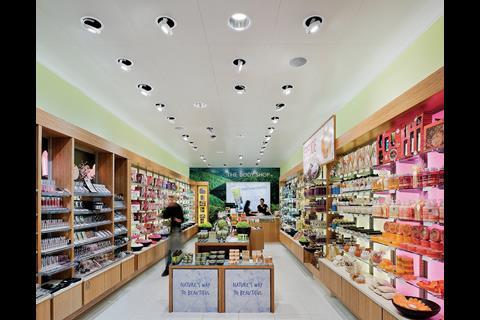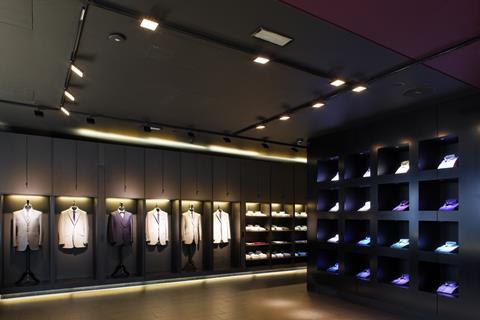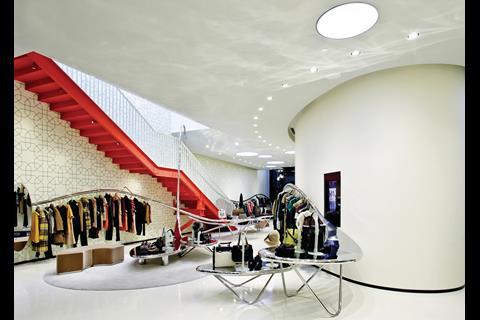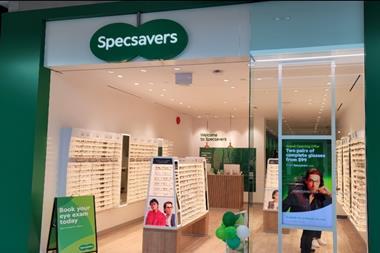As a sector that can genuinely claim to be in the midst of revolution, lighting strategies have been transformed by technological innovation, but it’s not all about LEDs as Mark Faithfull discovers.
For the past two years much of the lighting industry has been immersed in a bid to make LEDs the de facto lighting solution for retail, with mixed success. There are a number of LED-only stores, various supermarkets have piloted full or partial LED solutions and the technology has improved dramatically, enabling it to be offered as a genuine contender to conventional lamp sources. But as is so often the case with fledgling technologies, what has held LEDs back is not their undoubted virtues but the over-promising that goes with them. Questionable quality from some imports and a lack of acknowledgement of the rapid churn of many store environments also call into question the value of longer-term energy benefits.
But as maturity seeps into the market, both lighting and retail designers generally remain convinced that LEDs will become dominant as their application to retail environments becomes better aligned.
“Up until this year, LEDs have been somewhat irresponsibly marketed as ‘ready for retail’, which has caused many retailers to feel left behind,” says John Chamberlin, sales and marketing director at Microlights. “In truth, responsible lighting manufacturers have shown their customers the current performance and let them decide for themselves that the equipment isn’t viable yet, but will arrive quickly.”
Torquil McIntosh, director of architectural practice Sybarite, agrees: “There are great products out there but there are also a lot of terrible lamps giving LEDs a rather poor reputation.
“The main criterion for us is that the lamps need to be of a high quality – with good cooling fins – and the colour temperature is important. The aim at the end of the day is to light merchandise in as dramatic a way as possible. LEDs cast powerful directional light that will make products pop and create fantastic games of shadows.”
Mindful of the fact that some LEDs have not lived up to their promise, Jonathan Morrish, head of retail lighting at Erco, reflects: “Right now retailers may have discovered that changing tungsten lamps for their ‘claimed’ equivalent LED versions often does not provide the kind of quality performance they would have wished for. Perhaps those trials are old hat now and so the next move has been to change general lighting for complete LED fixtures but not the spot lighting or accent lighting. Maybe the power or light output isn’t up to the mark, which is certainly the case compared with metal halide. The quality, however, is. Colour rendering has improved as has colour stability, and so has light output.”
Consequently, Morrish says retailers should not be deterred. He points to the improvements in LED design and performance and reflects that as LEDs can be controlled they provide a much more user-friendly solution for retail, adding of Erco’s current focus: “Of course innovation’s based on developments in metal halide, but all of our investment and focus is currently related to LED technology and performance.”
Andy Merola, retail sales manager at supplier Havells-Sylvania, adds: “Some retailers want to embrace LED technology and some are concerned about the capital cost increase versus the most popular metal halide lamps. But retailers using LEDS are seeing that they are constantly evolving and with better chips they are able to reduce the wattage in-store while not compromising on overall lux levels.”
But McIntosh stresses it is not all about LEDs. “We still like specifying fluorescents, especially dimmable when budgets allow. We usually use them above stretched ceiling systems, which give off fantastic, diffused light. These, combined with directional spots, work a treat to create focal points in retail environments.”
He adds: “In shop-in-shop contexts we have to sometimes rival strong lighting from adjacent brands. In these scenarios we may opt for powerful halogens or metal halides, although we try and avoid this. We have also gone the opposite way and designed very low and soft lighting, creating a chilled out, cool space for customers. As you can imagine, in a heavily-lit environment with the chaos of loads of brands competing, opting for a dimly lit space can be just as effective.”
Looking ahead, Chamberlin believes that the transition to greater LED inclusion is inevitable but he also believes that the lighting sector needs to understand the nature of retail. “Retail isn’t like offices or commercial projects, so chip manufacturers have to realise that the market needs a high light output at an energy consumption level below existing technology to generate the sensible ROI demanded,” he says. “It is interesting to note that [Westfield] Stratford opened in 2011 as the current state-of-the-art retail showcase with 2% (fewer than five stores) using LEDs as a main lighting source. Any state-of-the-art mall opening in 2013 will almost certainly be the reverse of that.”
Sustainability: How can retailers buy-in?
“Sustainability means two things: running or through-life performance; and raw materials, origin of production and safe disposal. The running characteristics cover the energy efficiency and the ability for the fixture to maintain performance through life. We have to deliver this performance in a high-quality way and offer maintenance-free products. Simple to say but in practice the world of optoelectronics will create demand on suppliers for fixtures that should last 10, 15 or even 20 years. This really is a sustainable improvement and one that must be better understood by the retail market. For the latter, we – like others – will lead the way in the use of non-hazardous materials, reduced or environmentally-friendly packaging and carbon plans for factory reductions. All of which will satisfy the increasing demands of both retailers and consumers. However, the biggest sustainability argument must be to embrace the principle of higher quality LED lighting solutions. In the medium to longer term, the potential benefits are huge.”
Jonathan Morrish, head of retail lighting, Erco
John Lewis: reducing energy consumption

John Lewis has specified GE Lighting’s CMH Ultra lamps for its newbuild and refurbishment programme. Embodied into Edge Lighting’s range of high-efficiency luminaires, the lamps optimise output, colour rendering and uniformity and have enabled John Lewis to reduce energy consumption by more than 50%. The retailer’s flagship store on Oxford Street was one of the first stores to be retrofitted, and John Lewis at Home branches are also benefitting. John Lewis lighting design manager Barry Ayling says: “We have significantly reduced energy consumption without compromising the look and feel of our stores. Visually the stores and merchandise appear more vibrant, maintenance costs are reduced and sustainability is optimised.”
Supermarkets: efficiency matters

Grocery groups have made much of energy efficiency, with one of the most recent examples being the 25,000 sq ft Waitrose in Bracknell. It opened in November and incorporates a raft of features to reduce carbon dioxide equivalent emissions by about 80%. In terms of lighting’s contribution, Bracknell is the first Waitrose store to use automatic presence control lighting in the warehouse, staff areas and on the shopfloor after trading hours. Sun tubes have been employed to let natural daylight into the shopfloor and customer toilets, designed to work in conjunction with the artificial lighting scheme along with daylight sensors. In Europe, three Spar stores in Vienna and Murau, Austria, plus Wetzikon, Switzerland were lit totally by LEDs. In combination with structural measures, the branches have reduced energy requirements by 50%. Zumtobel’s Tecton continuous-row lighting was fitted with LEDs, combining high lighting quality with a long service life and low maintenance.





























No comments yet